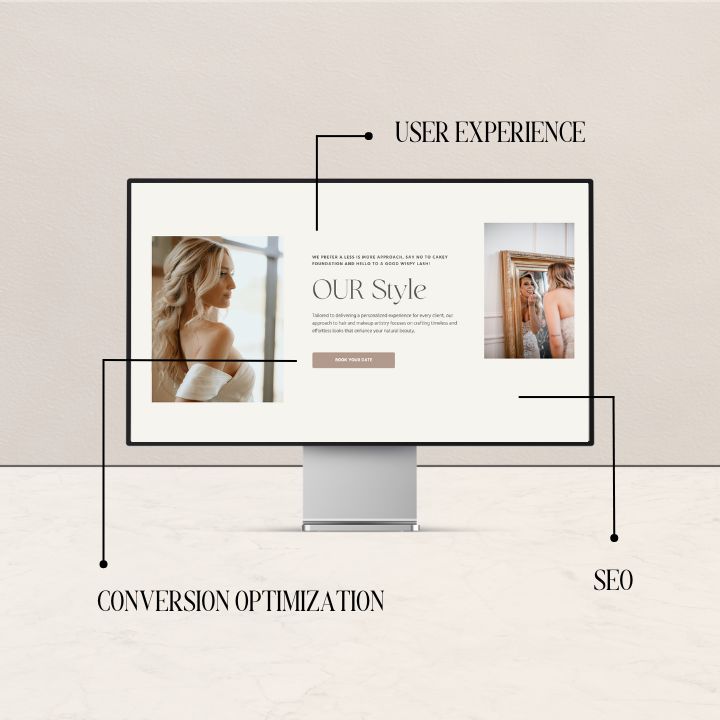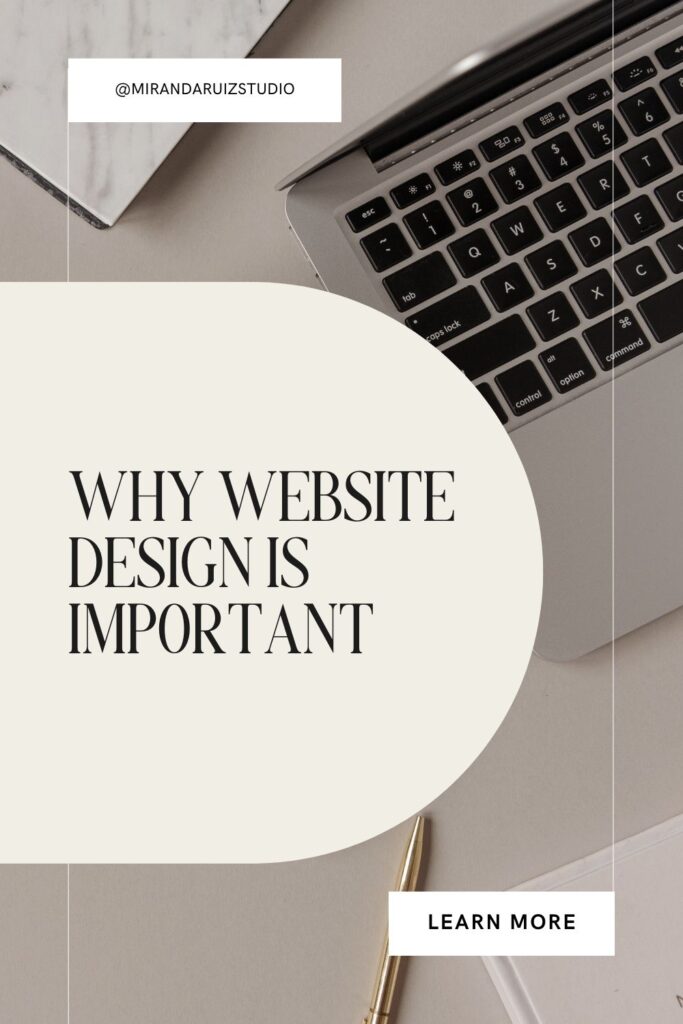Thank you for reading!
If would you like us to create a high-converting website for you, Click here.
Ensure your Website Design is Aimed at your Targeting Audience
As brand and website designers, we emphasize why website design is important when creating a brand and website people recognize, connect with, and trust. However, with so many elements of a website, it can be challenging to know where to start.
To create a website that will impact your business, you must first understand why website design is important and essential to the design process of it and how it will help you create a website that resonates with your clients.
Today we’ll show you why having a strategic website design is crucial for businesses of all sizes. Your website serves as your virtual storefront, often forming the first impression potential customers have of your brand. In this post, we’ll dive into why website design is so important and explore key factors that contribute to its effectiveness.
Table of Contents:
- Importance of First Impressions
- Impact on User Experience
- Influence on SEO
- Conversion Optimization
- Case Studies and Practical Examples
- Conclusion
Let’s dive in!
Importance of First Impressions:
When users land on your website, they form an impression within milliseconds. This initial impression can significantly impact their perception of your brand. A visually appealing and well-designed website helps to capture the attention of visitors and encourages them to explore further. Conversely, a poorly designed website can deter users and lead to high bounce rates.
To make a positive first impression, focus on clean and modern design elements, such as high-quality imagery, intuitive navigation, and consistent branding. Pay attention to details like color schemes, font choices, and whitespace to create a visually cohesive and engaging user experience.
Related: Things to Know Before Designing Your Site

Impact on User Experience:
User experience (UX) plays a crucial role in determining the success of your website. A well-designed website should be easy to navigate, load quickly, and provide valuable content to users. Positive user experiences lead to increased engagement, longer time spent on your site, and higher conversion rates.
Ensure that your website is responsive and mobile-friendly, as more users are accessing the internet on mobile devices than ever before. Optimize page load times by compressing images, minimizing HTTP requests, and leveraging browser caching. Additionally, prioritize clear and intuitive navigation to help users find the information they’re looking for quickly and easily. If you want to learn more about how your website design Impacts the User Experience, read: How Website Design Affects User Experience.
Influence on SEO:
Website design also has a significant impact on search engine optimization (SEO). Search engines like Google consider factors such as mobile-friendliness, page speed, and site structure when ranking websites in search results. A well-designed website that meets these criteria is more likely to rank higher in search engine results pages (SERPs).
To improve your website’s SEO, focus on creating a clean and crawlable site structure with clear navigation and internal linking. Optimize images and multimedia elements for fast loading times, and ensure that your website is responsive across all devices. Additionally, regularly update and optimize your website’s content to keep it relevant and valuable to users. If you want to know more about how create the best SEO strategy for your Showit website, read: Showit SEO: Everything you need to know.
Conversion Optimization:
Effective website design can also lead to higher conversion rates and improved business outcomes. By strategically placing calls-to-action (CTAs), optimizing landing pages, and creating a seamless user journey, you can guide visitors towards taking desired actions, such as making a purchase or signing up for a newsletter.
When designing your website, prioritize clarity and simplicity in your CTAs to make it easy for users to take action. Test different design elements, layouts, and messaging to identify what resonates best with your audience and drives the highest conversions. Additionally, use analytics tools to track user behavior and optimize your website for maximum conversion effectiveness.
Practical Examples:
To further illustrate the importance of website design, let’s look at some real-world examples of effective websites. Companies like Apple, Airbnb, and Nike are known for their visually stunning and user-friendly websites that prioritize both form and function. These websites not only attract visitors but also guide them through the sales funnel with precision and ease.
By analyzing successful websites in your industry and identifying key design elements that contribute to their effectiveness, you can gain valuable insights for improving your own website. Look for patterns in layout, color scheme, navigation, and messaging, and incorporate these best practices into your own website design strategy.
Conclusion:
In conclusion, website design plays a critical role in shaping the success of your online presence. From making a positive first impression to driving conversions and improving SEO, the design of your website impacts every aspect of the user experience. By prioritizing clean, modern design principles and continuously optimizing your website for usability and performance, you can create a powerful online platform that attracts and engages visitors, drives conversions, and ultimately helps you achieve your business goals.
Did you find this post helpful? Comment below and share your thoughts!
If you’re looking to take your online presence to the next level, click HERE to start your website design experience that will take you apart from your competition!

Why Website Design is Important
category